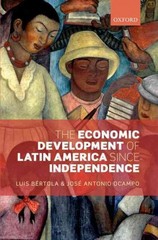Question
CHAPTER 17 Question 1 For the descriptions in a. through e. below, provide the name of the federal tax that would apply ( choose from
CHAPTER 17
Question 1
For the descriptions in a. through e. below, provide the name of the federal tax that would apply (choose from the following options: corporate income tax, excise tax, payroll tax, tariff, estate and gift tax).
a. the government wants to discourage consumption of soda, so it taxes soda sales at a rate of 1.1% above sales of other consumption goods
b. a company imports large quantities of grain to the United States from Europe, and the government assesses a tax on the imported grain
c. a tax used to finance Social Security and Medicare
d. the government assesses a tax on a lump sum $4 million in cash which is about to be passed from one generation of a family to another
e. a company makes profits of $1 million in 2021, which are then taxed
Question 2
Read carefully: if your incomeincreasesand you are subject to aregressivetax system, what will happen to the percentage of your income that is taxed?
Question 3
Up to the wage limit, the Medicare payroll tax is aflatpercentage of all wages earned. In effect, this means that up to the wage limit, the Medicare payroll tax isprogressive/proportional/regressive(choose one of the underlined options).
Question 4
For each of the following situations a. through c., answer by stating whether expansionary or contractionary fiscal policy would be more appropriate:
a. Suddenly, prices increase for all goods across the economy b. The economy is booming and the equilibrium in the AD/AS model has been above and to the right of where SRAS and LRAS intersect for an extended period of time c. A period of weak hiring has gripped the entire economy, resulting in rapidly increasing unemployment
Question 5
During the COVID-19 pandemic and shutdowns, Congress passed a stimulus bill to provide money to Americans. However, it took an extended amount of time for many to receive their funds. Of the various types of time lags discussed in chapter 17, which of them do you think most likely caused this delay, and why?
CHAPTER 18
Question 6
For partial credit, show your work.In a country, private savings equals 200, public savings equals 99, and the trade deficit equals 54. What is the level of private investment (I) in this economy?
Question 7
For partial credit, show your work.In a country, private investment equals 745, the government budget deficit equals 25 (in other words, public savings equals -25), and the trade deficit equals 120. What is the level of private savings (S) in this economy?
Question 8
For partial credit, show your work.Suppose that it is the year 1999 and the U.S. government has a budget surplus, although the economy is still experiencing a trade deficit. Private savings equals 19, the government surplus equals 499, and private investment equals 1,120. What is the level of the trade deficit (M-X) in this economy?
Question 9
For partial credit, show your work.Assume an economy has a budget surplus of 1,600, private savings of 3,000, and investment of 4,400.
a. Write out a national saving and investment identity for this economy. b. What will be the balance of trade in this economy? c. If the budget surplus changes to a budget deficit of 1,600, with private saving and investment unchanged, what is the new balance of trade in this economy?
CHAPTER 20
Question 10
Briefly describeyour own original exampleof a country having a comparative advantage, by filling in the blanks below.
Name of country: _____
The good being produced: _____
Reason for comparative advantage: _____
Question 11
Norway can produce 60 bushels of Apples or 15 pounds of firewood. In contrast Denmark can produce 20 bushels of apples or 10 pounds of firewood.
a. Which country has the absolute advantage in producing apples? b. Which country has the absolute advantage in producing firewood? c. What is the opportunity cost of producing one bushel of apples in Norway? d. What is the opportunity cost of producing one bushel of apples in Denmark? e. Which country has comparative advantage in producing apples? f. In what product should Norway specialize? g. In what product should Denmark specialize?
Step by Step Solution
There are 3 Steps involved in it
Step: 1

Get Instant Access to Expert-Tailored Solutions
See step-by-step solutions with expert insights and AI powered tools for academic success
Step: 2

Step: 3

Ace Your Homework with AI
Get the answers you need in no time with our AI-driven, step-by-step assistance
Get Started


